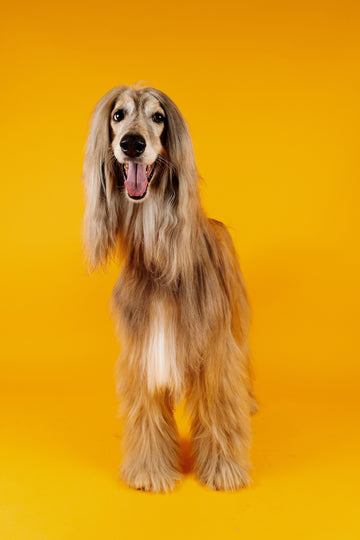Enrichment is often thought of in physical terms — long walks, tug-of-war, or that endless game of fetch that could go on until sunset. But mental stimulation is where true connection begins. Every dog, from the calm observer to the excitable adventurer, has a mind that thrives on challenge, curiosity, and communication.
At Every Tail®, we see play as a form of problem-solving. Whether a dog is tracking a scent, nudging open a puzzle box, or mastering a new trick, they’re doing something deeply intelligent: thinking, choosing, and learning how to understand us just as we try to understand them.
The Mind Behind the Wag
Dogs are emotional learners. They read tone, gestures, and even subtle shifts in mood faster than most humans realise. When we offer them structured enrichment — something that engages their brain as much as their body — we’re nurturing that natural intelligence.
Mental stimulation doesn’t have to mean complex training sessions. It can be as simple as hiding treats for them to sniff out, offering toys that respond to their actions, or giving them choices during play. These moments activate memory, focus, and emotional regulation — the same skills they use to navigate the human world around them.
And it’s not just about avoiding boredom. Dogs who engage their minds are often calmer, more confident, and more resilient. When they understand that the world responds to their choices, their sense of agency — and joy — grows.
Every Dog Thinks Differently
Through the Every Tail play personalities, we’ve seen how dogs approach problem-solving in wonderfully unique ways.
• The Mastermind thrives on puzzles, strategy, and figuring things out.
• The Trailblazer finds joy in exploration and sensory discovery.
• The Wild Card loves spontaneity, surprise, and playful chaos.
• The Olympian lives for movement, precision, and physical challenge.
Each play style is an expression of intelligence — not one better than another, just different ways of seeing and interacting with the world. Recognising your dog’s thinking style allows you to tailor enrichment that feels rewarding and natural, not forced or frustrating.
At Every Tail, we believe this is the essence of understanding an animal: not teaching them to perform, but learning how they like to learn.
Beyond Obedience
When we think of “training,” it’s easy to picture commands like sit, stay, or speak. But true mental enrichment transforms these cues into shared understanding. Instead of obedience, think of it as communication.
A recall cue becomes a conversation: “Come here, let’s reconnect.”
A “wait” becomes a moment of trust.
A “find it” becomes an invitation to problem-solve.
In this way, training shifts from performance to partnership — a dance between focus and freedom that strengthens the bond between you and your dog.
Simple Ways to Enrich a Dog’s Mind
Mental enrichment can happen anywhere, with tools you already have at home. The goal is to keep your dog thinking, not just moving.
Here are a few ways to start:
1. Hide and seek: Hide a favourite toy or treat and encourage them to sniff it out.
2. Name their toys: Many dogs can learn the names of their favourite items — it’s a great language game.
3. Puzzle feeders: Rotate toys that make them work for their meals or treats.
4. Scent games: Scatter kibble in the grass or use scent mats to engage their nose and brain.
5. Short trick sessions: Teach a simple trick like “spin” or “high five.” Keep it upbeat and brief — success builds confidence.
The beauty of these exercises is that they meet dogs where they are. High-energy dogs can channel their drive into focus; thoughtful dogs can explore problem-solving at their own pace.
Try This at Home
To start building your dog’s mental enrichment routine, try this simple approach:
1. Pick one brain game — a puzzle toy, a “find it” command, or a short training cue.
2. Set them up for success — start easy and reward generously.
3. Rotate challenges — introduce new puzzles or environments weekly.
4. Pair brain work with emotional connection — celebrate their effort, not just their accuracy.
You’ll start noticing subtle changes: calmer rest, sharper focus, more expressive play. That’s the sign of a dog whose mind feels seen.
A Closing Thought
Dogs don’t just need stimulation — they need understanding. When we look beyond fetch and see the thinking mind behind the wag, enrichment becomes something deeper: a shared discovery.
At Every Tail, we believe a fulfilled dog isn’t one who simply burns energy, but one who uses their brilliant mind to connect, explore, and grow — every day, in their own way.
Because every dog is, at heart, a thinking dog.




